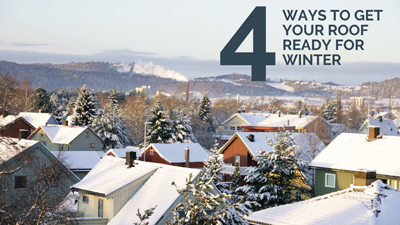A complete inspection with a written report designed to inform and
educate a buyer about the overall condition of the home.
4 Ways to Get Your Roof Ready for Winter
 The winter weather brings several stressors to any roof system. If you live in a place with harsh winter weather, it is essential to ensure that your roof is ready for winter. You want to make sure that it can do its job of keeping you safe and warm and withstand the tirade of bad weather coming your way.
The winter weather brings several stressors to any roof system. If you live in a place with harsh winter weather, it is essential to ensure that your roof is ready for winter. You want to make sure that it can do its job of keeping you safe and warm and withstand the tirade of bad weather coming your way.
Make sure that your roof is winter-ready by following these tips.
Check for roof damage.
Having a roof over our heads is one of our most basic needs for survival. As the temperature drops during the winter months, this becomes increasingly important.
Inspect your roof for missing or damaged shingles, damaged flashings, cracks curling edges, as well as leaks. Be sure to address these issues before winter sets. This will help extend the life of your roof and keep you safe and comfortable throughout the winter.
Clean the gutters
Winterizing your roof starts with a thorough cleaning. Gutter, drains, and downspouts should be free of leaves, pine needles, and other debris to allow water to flow. It also prevents problems and unforeseen costs. Leaf guards can help prevent leaves and debris from accumulating in your gutter system.
When leaves and debris accumulate in the gutter, the downspouts get clogged. When this happens, large amounts of water will collect on the roof or pool of your home. This may damage your roof, trim, siding, and gutters.
Check your attic
You’ll want to go up into your attic and check the inside of your roof. Look for signs of water damage, sagging areas, roof leaks, and any light showing from outside. Call a professional if you find areas that look suspicious and have them repaired immediately.
Trim your trees
While trees can offer protection from the sun in the summer months, they can dent your roof and scratch your shingles during heavy storms. Plus, snow and ice can build up on these branches. The additional weight may cause them to snap and land on your roof. That said, we recommend trimming any low-hanging branch near your roof.

